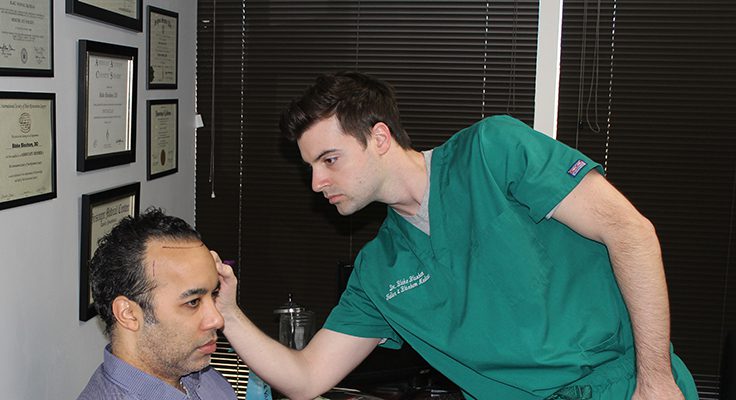Am I a Good Hair Transplant Candidate?

Who are good hair transplant candidates?
Here are some things to consider if you are thinking of having a hair transplant:
What is the cause of your hair loss?
Although the most common cause of hair loss is patterned genetic alopecia in both men and women, there are many other causes, some of which are not treatable with surgery. Hair restoration surgery can successfully treat those suffering from genetic patterned hair loss. Many of the other causes of hair loss are not successfully treated with surgery because a hair transplant procedure can worsen the underlying condition, or the newly transplanted hairs can be negatively affected and lost as the underlying process that led to the hair loss to begin with. A qualified hair transplant specialist would be the best to determine the cause of the hair loss.
What is the pattern of hair loss?
Men and women who have a genetically caused, well-defined pattern of hair loss can be successfully treated with hair restoration surgery. A person with a diffuse hair loss condition is not a suitable candidate for surgical hair restoration. The best hair transplant candidates are those who have had hair loss for several years and whose hair loss has stabilized.
How is the donor region?
To be a candidate for surgical hair restoration, you must have a sufficient number of healthy hair follicles that can be harvested from the safe donor region. Unfortunately, some individuals do not have enough donor density to move hair to the balding areas and, therefore, would not be ideal candidates for a hair transplant procedure. Luckily most have average to above-average donor densities. The only way to determine if your donor density is adequate for surgery is through an evaluation by a hair transplant specialist.
Are my hair restoration goals realistic?
Hair transplant surgery can provide lifelong natural results. Nevertheless, like many things in life, there are limitations to what can and cannot be done with hair transplant surgery. All the hair follicles you will ever have are present at birth, and medical science has not yet discovered a way to clone or regenerate hair follicles. And depending on the extent and type of balding pattern that emerges, men have anywhere between 0 and 8,000 permanent donor follicles that can be moved. And as a benchmark, someone who is bald from front to back would require 5000 to 7000 grafts to provide good coverage.
The primary goal of a hair transplant is to recreate a frame for the upper face with an aesthetically pleasing hairline within the confines of the limited follicular resources. And so a more conservative hairline will look natural and age-appropriate throughout life. The hair restoration surgeon needs to balance the present and future needs of the hair transplant candidate. The surgeon has to use the available grafts responsibly and judiciously and must balance the need to create a hairline that satisfies the patient with the need to conserve the limited resource for possible future use. As hair loss is a progressive condition, there needs to be a balance between the hairline design and preserving donor follicles for future use should the need arise to have a repeat procedure.
For the younger patient, the available supply of donor hair is often at odds with their demand for a juvenile hairline. Younger patients often hold too high expectations for the desired density and position of the hairline in their quest to reconstruct their hairline.
Due to the existing supply-demand issue, a juvenile hairline is only sometimes achievable in certain circumstances. For example, an older man with minimal hair loss and an abundant donor supply could be considered for a more aggressive and juvenile hairline, in contrast to those who are younger with more extensive hair loss and average donor density who would require a more conservative approach and likely multiple procedures to achieve their goals.
Am I OK with the possibility of multiple surgeries?
Older patients with high-density donor regions and milder stages of hair loss may be able to have more aggressive plans and achieve their hair restoration goals with a single procedure. However, this is only the case for some individuals. Individuals with advanced stages of hair loss and those who are younger (because hair loss is a progressive condition) often require more than one surgery to achieve their hair restoration goals.
There is a limit to the number of hair follicles that can be safely harvested in a single sitting. This depends on several factors, including the density of the donor region, age, scalp characteristics, and healing ability. About 2500 grafts can be safely harvested from the average patient in a single FUT procedure without compromising the ability to close the incision site and wound healing. Nonetheless, there are individuals with amazingly dense donor densities who can easily give 3000 or more follicles in one FUT procedure.
Am I ready to make a positive investment in myself?
Hair loss can cause significant emotional distress, including depression, low self-esteem, decreased confidence, and suicidal thoughts. Having a hair transplant procedure can be life-changing.
Great candidates are those that are ready to take control of the situation and start taking steps to regain their confidence and bring back a more youthful and attractive look.













